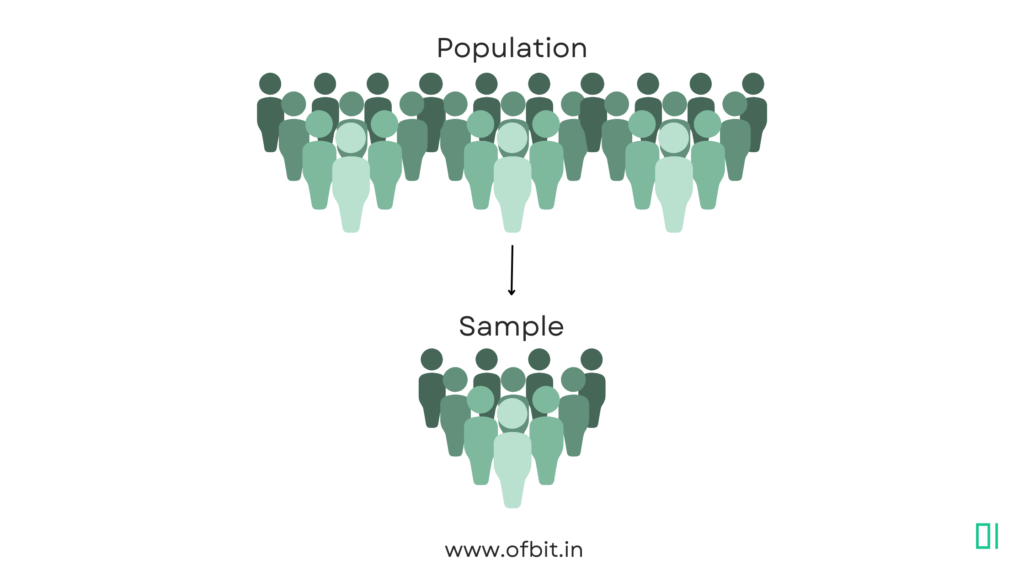in this tutorial, we will learn How does Sampling differ from the Population. In statistics, “Population” and “Sample” are fundamental terms. When conducting research, one of the foundational concepts is the distinction between a population and a sample. Understanding this difference is crucial for anyone involved in data analysis, statistics, or research methodologies. Below, we will explore how sampling differs from the population, the significance of this difference, and why it matters in research.
Understanding the Population
A Population includes every individual, object, or event that shares specific characteristics within a defined boundary. It represents the entire group a researcher aims to study. For example, all registered voters in a country form a population, or all apples in a particular orchard constitute another. The size of a population can be vast, making it challenging or impossible to gather data from every member, leading to the need for sampling.
Introducing the Sample
A Sample is a subset of the population. Researchers select a sample to represent the entire population in a study. The key is to ensure that the sample accurately reflects the characteristics of the population. For example, to understand the voting preferences across a country, pollsters might survey a group of 1,000 voters. The goal is to conclude the entire electorate based on the data collected from this smaller group.
How does Sampling differ from the Population?
In statistics, “population” and “sample” are fundamental terms, yet they are often misunderstood. Though they may sound similar, they refer to distinctly different entities that play crucial roles in research. let’s learn “How does Sampling differ from the Population?“.

Population vs Sample: Size and Scope
The size of a population is typically large and sometimes infinite, making it impractical or impossible to study every member. For instance, measuring the blood pressure of every person in a country is not feasible. In contrast, a sample is much smaller and manageable. Researchers choose a sample size that is large enough to provide reliable insights but small enough to be practically analyzed.
Population vs Sample: Purpose and Application
The purpose of studying a population is to obtain accurate and complete data that reflect the entire group. However, due to constraints like time, cost, and logistics, studying the whole population is often impractical. This is where sampling comes into play.
Sampling allows researchers to make inferences about the population without studying every member. By analyzing the sample, researchers can estimate characteristics, behaviours, or trends within the population. This method is widely used in surveys, experiments, and observational studies.
Population vs Sample: Accuracy and Representation
One of the main challenges with sampling is ensuring that the sample accurately represents the population. A sample must be carefully selected to avoid bias. A biased sample might lead to inaccurate conclusions that do not reflect the true characteristics of the population.
In contrast, studying the entire population eliminates the risk of sampling bias, as every member is included. However, as mentioned earlier, this is not always feasible, which is why sampling is such a critical technique in research.
Practical Examples – Population vs Sample
Medical Research: In clinical trials, researchers often use a sample of patients to test the effectiveness of a new drug. The findings from the sample are then generalized to the larger population of patients with the same condition.
Market Research: Companies conduct surveys with a sample of consumers to gauge the market’s reaction to a new product. The results help predict how the entire target market might respond.
Conclusion – How does Sampling differ from the Population?
Understanding the difference between sampling and the population is essential for conducting reliable research. While a population includes every individual or element within the scope of the study, a sample is a smaller, manageable group selected from the population. Sampling allows researchers to draw conclusions about the population efficiently and cost-effectively, provided that the sample is representative. Careful selection and analysis of samples ensure that the insights gained are valid and applicable to the broader population.
In research, sampling isn’t just a necessity—it’s a powerful tool that enables the exploration of vast populations through the study of smaller, more manageable groups.
Follow us:
If you like our articles and tutorials, you can follow us on Facebook. Also, join our Official Facebook Group for QnA sessions and Discussions with the worldwide technical community.
